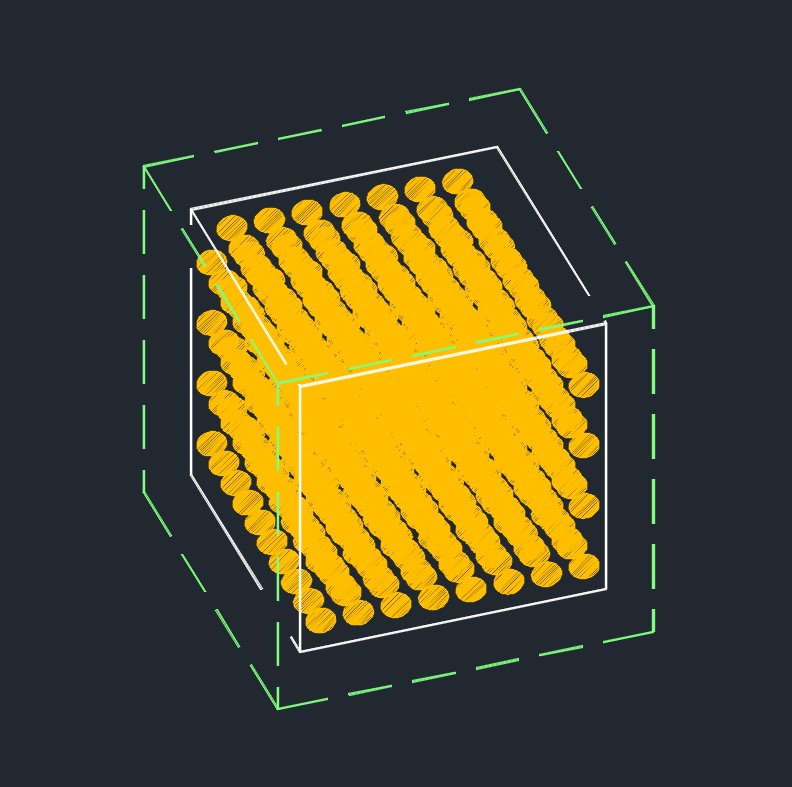Thermal Expansion of Solids
 Thermal expansion of solids refers to the change in dimensions (length, area, or volume) of a solid material in response to a change in temperature. When a solid is heated, its constituent particles gain kinetic energy and vibrate more vigorously, resulting in an increase in average separation between particles. This increase in particle spacing leads to the expansion of the solid material.
Thermal expansion of solids refers to the change in dimensions (length, area, or volume) of a solid material in response to a change in temperature. When a solid is heated, its constituent particles gain kinetic energy and vibrate more vigorously, resulting in an increase in average separation between particles. This increase in particle spacing leads to the expansion of the solid material.
Thermal Expansion of Solids Index
- Linear Thermal Expansion of Solid Formula
- Aerial or Superficial Thermal Expansion of Solid Formula
- Volumetric or Cubical Thermal Expansion of Solid Formula
The extent of expansion depends on the material's coefficient of linear expansion, which quantifies the change in length per unit length per degree change in temperature. The linear expansion coefficient varies for different materials and is typically positive, indicating that most solids expand when heated. The linear expansion coefficient can be used to calculate the change in dimensions for other geometrical shapes, such as the change in area or volume.
It's important to note that not all materials expand uniformly in all directions. Anisotropic materials have different expansion coefficients in different directions, leading to non-uniform expansion or contraction.
Thermal expansion is a critical consideration in various applications, including construction, engineering, and manufacturing. Understanding the thermal expansion behavior of materials is crucial to design structures, components, and systems that can accommodate the dimensional changes associated with temperature variations and prevent unwanted stresses or deformations.
Linear Thermal Expansion of Solid Formula |
||
|
\( \Delta l = \overrightarrow{\alpha_l } \; l_i \; \Delta T \) (Thermal Expansion of Solids) \( \overrightarrow{\alpha_l } = \Delta l \;/\; l_i \; \Delta T \) \( l_i = \Delta l \;/\; \overrightarrow{\alpha_l } \; \Delta T \) \( \Delta T = \Delta l \;/\; \overrightarrow{\alpha_l } \; l_i \) |
||
| Symbol | English | Metric |
| \( \Delta l \) = length differential | \( in \) | \( mm \) |
| \( \overrightarrow{\alpha_l} \) (Greek symbol alpha) = linear thermal expansion coefficient | \(in \;/\; in\;F\) | \(mm \;/\; mm\;C\) |
| \( l_i \) = initial length | \( in \) | \( mm \) |
| \( \Delta T \) = temperature differential | \( F \) | \( C \) |
Aerial or Superficial Thermal Expansion of Solid Formula |
||
|
\( \Delta A = 2\; \overrightarrow{\alpha_l} \; A_i \; \Delta T \) (Aerial or Superficial Thermal Expansion of Solid) \( \overrightarrow{\alpha_l} = \Delta A \;/\; 2 \; A_i \; \Delta T \) \( A_i = \Delta A \;/\; 2 \; \overrightarrow{\alpha_l} \; \Delta T \) \( \Delta T = \Delta A \;/\; 2 \; \overrightarrow{\alpha_l} \; A_i \) |
||
| Symbol | English | Metric |
| \( \Delta A \) = area differential | \( in^2 \) | \( mm^2 \) |
| \( \overrightarrow{\alpha_l} \) (Greek symbol alpha) = linear thermal expansion coefficient | \(in \;/\; in\;F\) | \(mm \;/\; mm\;C\) |
| \( A_i \) = initial area of object | \( in^2 \) | \(mm^2 \) |
| \( \Delta T \) = temperature differential | \( F \) | \( C \) |
volumetric or cubical Thermal Expansion of Solid Formula |
||
|
\( \Delta V = 3\; \overrightarrow{\alpha_l} \; V_i \; \Delta T \) (Volumetric or Cubical Thermal Expansion of Solid) \( \overrightarrow{\alpha_l} = \Delta V \;/\; 3 \; V_i \; \Delta T \) \( V_i = \Delta V \;/\; 3 \; \overrightarrow{\alpha_l} \; \Delta T \) \( \Delta T = \Delta V \;/\; 3 \; \overrightarrow{\alpha_l} \; V_i \) |
||
| Symbol | English | Metric |
| \( \Delta V \) = volume differential | \( in^3 \) | \( mm^3 \) |
| \( \overrightarrow{\alpha_l} \) (Greek symbol alpha) = linear thermal expansion coefficient | \(in \;/\; in\;F\) | \(mm \;/\; mm\;C\) |
| \( V_i \) = initial volume of object | \(in^3 \) | \( mm^3 \) |
| \( \Delta T \) = temperature differential | \( F \) | \( C \) |
